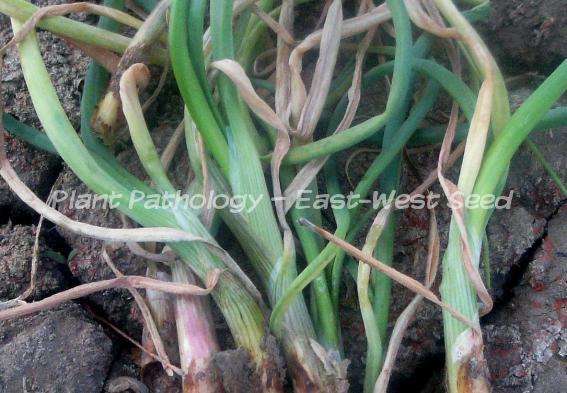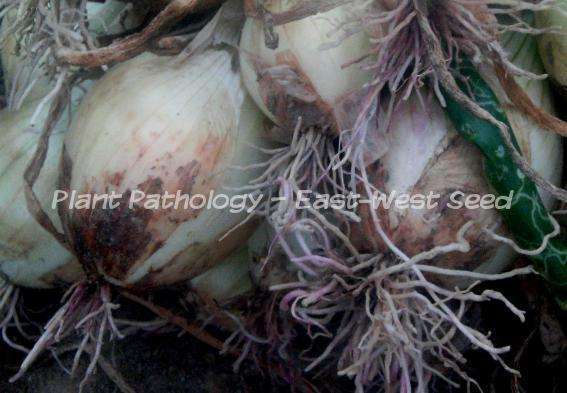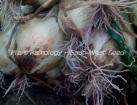Causal Agent:
Bacterium(Pectobacterium carotovorum)
| Characteristic Symptoms: | |
 |
Affected plants show blighting which starts from the lower leaves and plants eventually wilt. |
 |
Bulbs of infected plants rot which initially starts from the neck tissue or wounds and spreads to the internal bulb scales. |
 |
Affected bulb scale tissues becomes water-soaked, pale yellow to light brown and becomes soft as the rot progresses. Then, bulb becomes watery, foul smelling and viscous liquid may ooze from the neck if the affected bulb is squeezed. |
| Conditions for Disease Development: | |
 |
Most common on onions in storage or transit; however, this disease can develop on onions in the field before harvest, after heavy rains and when leaves are drying. |
 |
Main sources of inoculum are contaminated soil and crop residues. |
 |
The bacteria are spread by rain splashes, irrigation water and insects. |
 |
Entry into the bulbs is only through wounds such as those caused by transplanting, mechanical injuries or sunscald. Also, onion maggots can carry bacteria and introduce them while feeding.
|
| Management and Control: | |
 |
Avoid using fertilizer with high nitrogen content and avoid prolonged moisture.
|
 |
Make sure that the neck of bulbs are dry before storage.
|
 |
Avoid bulb injuries during harvesting and transit.
|
 |
Maintain good field sanitation (i.e. early removal of infected plants/plant parts).
|
 |
Apply copper-based fungicides (e.g. Cupravit®, Super BlueⓇ, Vitigran blueⓇ, FunguranⓇ, KocideⓇ, Hydroxide superⓇ) to minimize spread and infection. |
| References: | |
| Compedium of Onion and Garlic Diseases and Pests (Second Edition) | |
To view other diseases, click here.
Need more help? Ask the Doctor.








